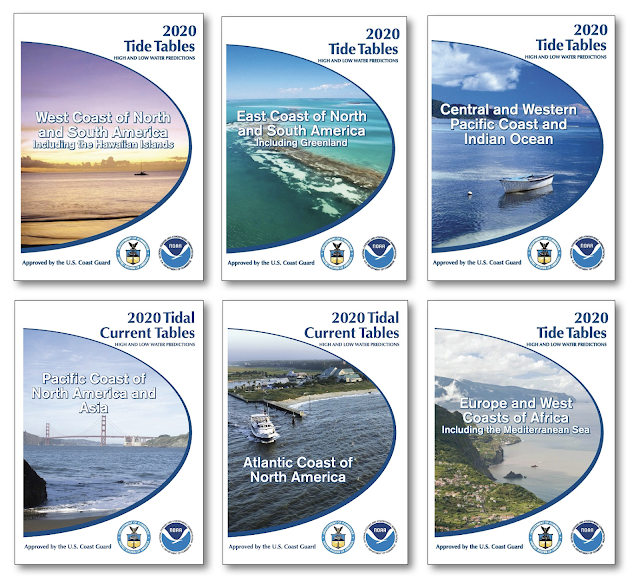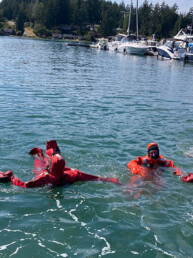The short answer for many mariners is: nothing changes — but that takes some explaining.
The official NOAA tide and current books of 1995 to 2020 looked something like these below from one particular printer—but there were several different printers, with different cover designs for the same content.

Books with this full range of content are no longer supported by NOAA. We may see versions of the four on the left from third party printers this year, but they will not include any of the international data, and the two on the right will not be available. NOAA no longer has that international data to distribute, except for US territories.
The reference station predictions included (now called harmonic stations) would be official NOAA data, indicated by the presence of the NOAA logo on each page, but the subordinate station corrections in Table 2 (if present) would be the 2020 versions, because these correction tables are not supported beyond 2020. The 2020 tide station corrections are likely to be good for 2021, and the current station corrections are likely to be close, but chances are these 2020 Table 2 corrections will become less dependable as time goes by. Recall that Table 2 has always described its corrections as providing only “reasonable approximations of the current at the subordinate stations.” The tide heights version includes similar clarifications.
For those who historically obtained their subordinate station data from books like these there will be new procedures or new products called for. NOAA no longer produces tables of corrections, but they do indeed provide the full daily predictions for all stations, harmonic and subordinate at their website
David Burch
David Burch is the owner and courses director of the Starpath School of Navigation. An author and authority on weather and navigation, he has more than 70,000 miles of ocean experience ranging from the Arctic ice edge to Tahiti and Australia in the Pacific and from New York to Panama in the Atlantic.






